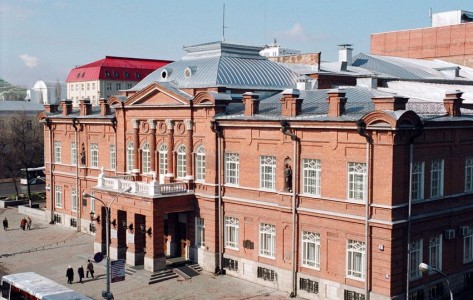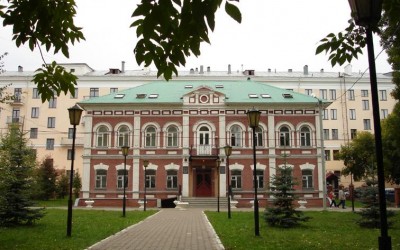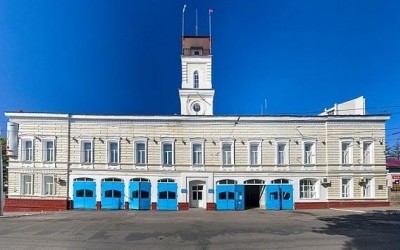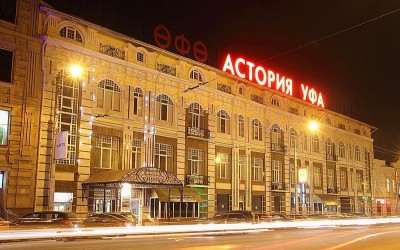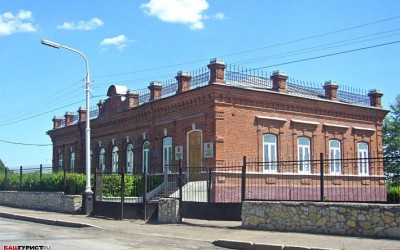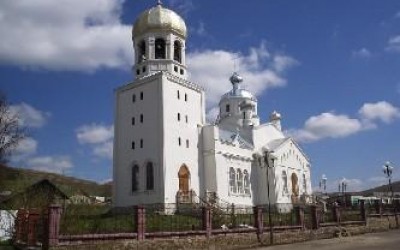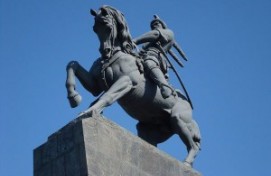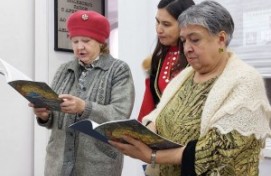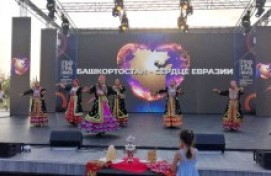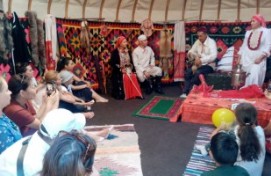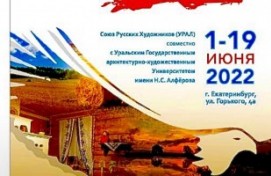-
Aksakov People's House (Nowadays: The Bashkir State Opera and Ballet Theatre).
Before the revolution Ufa had one of the Russia’s best summer theaters in Vidineev’s Garden, but for many years the city lacked a decent winter theater: wooden buildings burnt down repeatedly, whereas the halls of the Big Siberian Hotel, of the Society for Assistance to Private Servants and the Assembly of the Nobility were inconvenient for both performers and spectators. The city needed a building for a winter theater. Besides, the city did not have a spacious hall to host public meetings. Ufa Governor Klyucharyov believed that construction of one but the largest building in Ufa could solve all these problems. It was intended that Aksakov People’s House would host theatre and lecture halls, a library and reading room, and a museum. Besides, it was supposed to host a picture gallery which famous artist Mikhail Nesterov gave to the city as a gift.
On November 30, 1908 the meeting of all the population strata initiated by Governor Klyucharyov decided to build an Aksakov People’s House in Ufa. An All-Russia competition was announced to choose the best project. In summer of 1909 Moscow and Saint-Petersburg magazines informed their readers that Ufa citizens celebrated the 50th anniversary of death of their fellow-countryman and writer Sergei Aksakov. The magazines also mentioned about the creation of Ufa Aksakov Committee, its initiative to build a People’s House and collection of donations for this purpose.
All the projects, including the prize-winning projects, were severely criticized in Ufa. Finally, the project by a local engineer Pavel Rudavsky, compiled according to the pictures of Governor Klyucharyov, the Chairman of Aksakov Committee, was accepted. The best place in the city at the intersection of Central Street (now Lenin Street) and Pushkin Street was allocated for the building. On April 30, 1909, the day of the 50th anniversary of the writer’s death, the place was blessed.
A lot of innovations, like central heating, were used for the construction. During the meeting in February 1910 the construction committee decided to use reinforced concrete for all the ceilings.
During the construction the society of architects of the capital addressed the Academy of Arts and the Ministry of Internal Affairs with a request to suspend the construction of Aksakov House or, at least, its facades facing the street and the square. The point was that according to Rudavsky’s project the facade of the building on Pushkin Street was supposed to be built in a so-called Arabian style. Architects from the capital believed that the combination of two styles in one building is inartistic and strongly recommended to construct the building in a single style which they called the Renaissance (modern researchers call it neoclassicism, though the use of facing brick for various architectural details can denote a significant influence of the principles of the “brick style”). Such interference, though well-grounded, suspended the construction of Aksakov People’s House and didn’t allow finishing it by the beginning of the war. The interior finish remained an open issue till the 1920-s when the suggestions by Bondarenko, an artist, were approved.
When the war started in 1914 the Aksakov People’s House hosted gymnasiums and schools, because their own buildings were employed as military hospital. The city library also moved to the People’s House and was named Aksakov library.
It was believed that two wars didn’t allow finishing Aksakov People’s House: firstly, the I World War, then the civil war. But in reality only finishing works remained undone. In 1919 the former People’s House was opened. The same stage was “shared by drama and opera troupes.”
In various periods the People’s House was named the Palace of Labor and Arts, The House of Culture, and since 1938 it is called the Bashkir State Opera and Ballet Theater.




